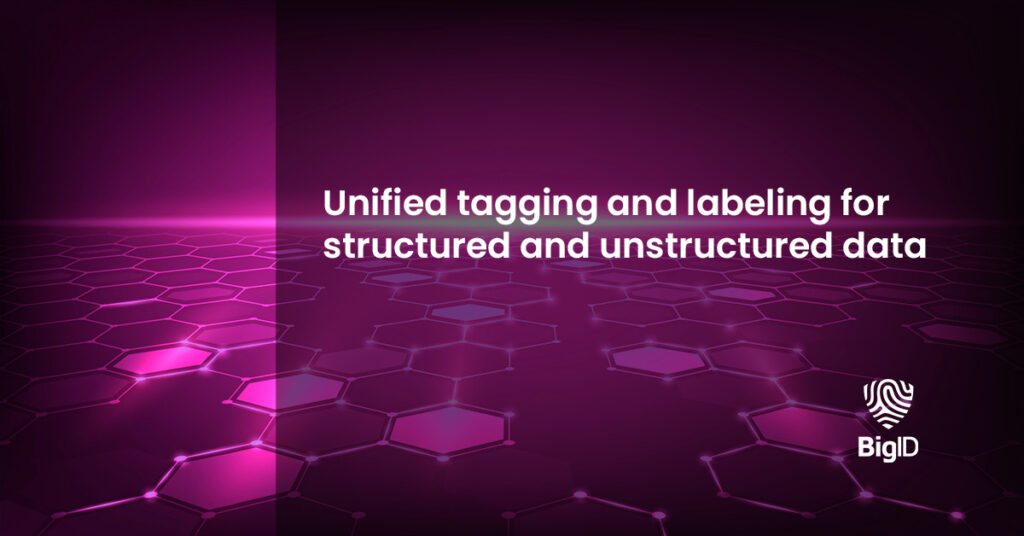Data has changed how the world does business – and with increased volume, velocity, and variety of data comes a growing need to rethink data security and governance. Traditional governance models are failing: organizations simply can’t scan metadata to the scale they need, and relying on data stewards to manually label everything is inefficient and unrealistic.
One way businesses can tackle this challenge? Automated labeling and tagging. It’s more critical than ever to manage risk for crown jewels of all types – whether that’s regulated data, intellectual property, secrets and keys, M&A data, and more.
While labels and tags serve different purposes, both are essential to managing data in a secure and organized manner:
- Labels are used to signify the sensitivity of the contents of a file or email, while tags are used to associate friendly business terms with technical structured data in a database or data warehouse.
- Labels help organizations quantify risk and are often used in tandem with downstream technologies like DLP or encryption to secure data.
- Tags, on the other hand, help make data more searchable by data stewards or data scientists, and assist data users in locating high-value data for their BI, AI, or data commercialization strategies.
Traditionally, labeling and tagging were associated with different buying silos and served slightly different purposes on different data source types. Labels were used on unstructured data for security purposes, while tags were used on structured data for easier searchability. However, the line between structured and unstructured data is disappearing, especially with the rise of cloud computing, making it increasingly important to have both labeling and tagging capabilities.
Moreover, the concept of risk and value in data is intertwined. Usually, high-value data is also high-risk data. This makes it crucial to have an understanding of both risk and value when managing data. Modern AI, such as large language models (LLMs) and ChatGPT, requires both unstructured and structured data, and knowledge of both risk and value.
BigID’s ability to tag or label both structured and unstructured data has become increasingly important as companies adopt cloud technologies and embrace new AI. This capability to tag and label all data, everywhere is critical for successful DSPM initiatives, DSP strategies, DLP+, and even data cataloging.
As the lines between data responsibilities between security and data organizations blur, it is essential to have an ability to tag or label data at the database or file level. BigID’s ability to apply tags and labels on files, objects in their catalog, and columns, as well as at a database level, and soon at an email level, makes it a unique and comprehensive solution for data labeling and tagging.
BigID also offers native labeling frameworks from AWS, GCP, Microsoft, and Snowflake, making it easier for them to interoperate with their security and data products. This allows companies to benefit from BigID’s labeling and tagging capabilities while using their preferred cloud provider or data management platform.
BigID’s ability to support both labeling and tagging on one platform is a key differentiator: as companies continue to adopt cloud technologies and AI, the need for comprehensive data labeling and tagging capabilities will only increase.
With BigID, customers can:
- Automatically classify, label, and tag unstructured & structured data
- Shift left to scan at creation via APIs and SDKs – no need to scan after the fact
- Scale to billions of objects with a single data inventory & catalog (incorporating business, technical, and operational metadata)
- Reduce data risk with retention, deletion, and deduplication
Want to see BigID in action? Click here to get a 1:1 demo on how to transform your data labelling and tagging strategy.


